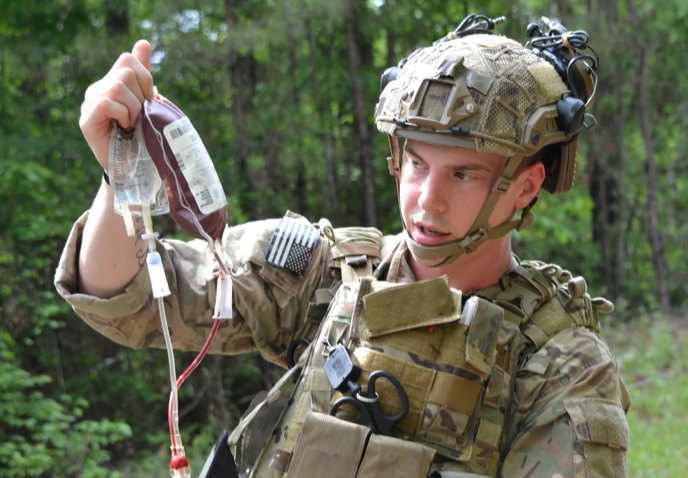
The 75th Ranger Regiment is called the Army's premier raid force, prepared to conduct airfield seizures, raids, ambushes, or secure critical infrastructure as America's quick reaction force to global contingencies. The Regiment has also been in the lead of innovating tactical medicine and preventing what could otherwise be preventable deaths of fellow Rangers on the battlefield.
The current Regimental surgeon, Lt. Col. Charles Moore, and the former Regimental surgeon Col. Ryan Knight recently wrote a discussion on the topic with Col. Russ Kotwal explaining what has made Ranger combat medicine so effective, and how those skills may translate to future large-scale conflicts.
The authors identified four points that made the Regiment successful at combat medicine and preventing unnecessary combat-related deaths. The first is mastering the basics of combat medicine. The second is the introduction of freeze-dried plasma and cold-storage blood that can be given to hemorrhaging patients almost immediately. Third is developing a casualty response system. And fourth is tactical medical planning.
In future large-scale conflicts, one difference may be the speed in which injured soldiers can be moved from the battlefield to a hospital, but the fundamentals of tactical medicine remain and will contribute to saving lives.
"Throughout twenty years of combat operations in Afghanistan and Iraq, the U.S. military and the 75th Ranger Regiment achieved low cumulative case fatality rates. Additionally, the regiment maintained zero prehospital preventable deaths," the authors conclude.
The authors advocate for pushing these lessons learned into the wider military, pointing out that because the Ranger Regiment is organized as a light infantry unit, these training standards have applicability across the Army and Marine Corps.
